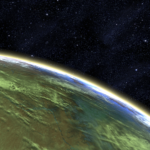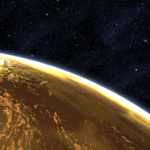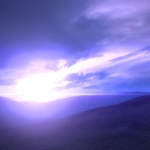System Specs:
- Stellar Mass: N/A Sol Masses
- Stellar Class: N/A
- Luminosity: N/A Sol
- Planets: 5
- Moons: 0
- Asteroid Belts: 1
- Asteroids: 0
- Objects: 0
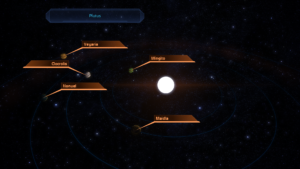
Plutus is a blue star. It is probably named for the ‘demon’ Plutus, one of the guardians of the fourth circle of Hell in Dante’s Inferno, the first canticle of the Divine Comedy.
–
Planets Directory:
- Mingito
- Maidla
- Clocrolis
- Nonuel
- asteroid belt
- Veyaria
–
Mingito:
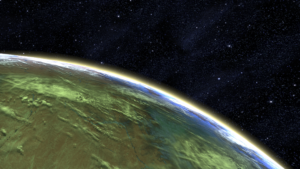
- Orbital Distance: 1.8 AU
- Orbital Period: 1.4 Earth-years
- Keplerian Ratio: 2.976
- Radius: 4,384 km
- Day Length: 1.4 Earth-hours
- Atmospheric Pressure: 0.2 atm
- Surface Temp: 675 °C
- Surface Gravity: 0.44 g
- Mass: 0.206 Earth-masses
Mingito is a sunbaked wasteland of sodium, chlorates, and radioactives. Its relatively light mass has left it tidally locked to Plutus, with a day side “hot pole” and a night side “cold pole”. The powerful solar wind has stripped most of the atmosphere away.
–
Maidla:

- Orbital Distance: 3.2 AU
- Orbital Period: 3.3 Earth-years
- Keplerian Ratio: 3.009
- Radius: 6,914 km
- Day Length: 33.4 Earth-hours
- Atmospheric Pressure: 0.48 atm
- Surface Temp: 497 °C
- Surface Gravity: 0.88 g
- Mass: 1.026 Earth-masses
Maidla is a terrestrial planet with a light atmosphere of carbon dioxide and hydrogen sulfide. The surface is hot, and mainly composed of magnesia with deposits of sulfur. Over a dozen volcanoes are erupting across the surface.
–
Clocrolis:

- Orbital Distance: 12.5 AU
- Orbital Period: 25.2 Earth-years
- Keplerian Ratio: 3.076
- Radius: 3,675 km
- Day Length: 57.0 Earth-hours
- Atmospheric Pressure: 0.37 atm
- Surface Temp: 161 °C
- Surface Gravity: 0.39 g
- Mass: 0.129 Earth-masses
Clocrolis is a modest rock planet, roughly the size of Mars. It has a thin atmosphere of carbon dioxide and ethane. Its scorching hot surface is mainly composed of silicate rock with deposits of aluminum and other light metals.
Clocrolis has a very weak magnetic field. In addition to high levels of solar radiation, it is not suitable for mass effect drive discharge operations.
–
Nonuel:

- Orbital Distance: 30.08 AU
- Orbital Period: 94.0 Earth-years
- Keplerian Ratio: 3.08
- Radius: 4,439 km
- Day Length: 46.9 Earth-hours
- Atmospheric Pressure: 0.88 atm
- Surface Temp: 127 °C
- Surface Gravity: 0.85 g
- Mass: 0.409 Earth-masses
WARNING: Level 1 Heat Hazard
Though it is one of the oldest entries in the star charts, Nonuel has not yet been fully mapped. It is the largest body in the asteroid belt of the blue star Plutus, not only large enough to maintain a spherical shape, but also massive enough to retain the noxious carbon and sulphur dioxides venting from its many volcanoes as an atmosphere.
Nonuel is rabidly volcanic, and the source of its great heat is also the source of its inordinate mass. Nonuel is a “secondary source” of element zero, coalesced around a large chunk of eezo ejected by a supernova billions of years ago.
Surface conditions are extremely hazardous. In addition to the thin crust and numerous magma flows, wide stretches of the landscape are coated with slippery ash and cinders ejected from the volcanoes.
–
Veyaria:

- Orbital Distance: 56.05 AU
- Orbital Period: 239.2Earth-years
- Keplerian Ratio: 3.078
- Radius: 78,204 km
- Day Length: 10.0 Earth-hours
- Atmospheric Pressure: N/A atm
- Surface Temp: N/A °C
- Surface Gravity: N/A g
- Mass: N/A Earth-masses
Veyaria is a huge hydrogen-helium gas giant with traces of methane in its atmosphere.
–
–
video
